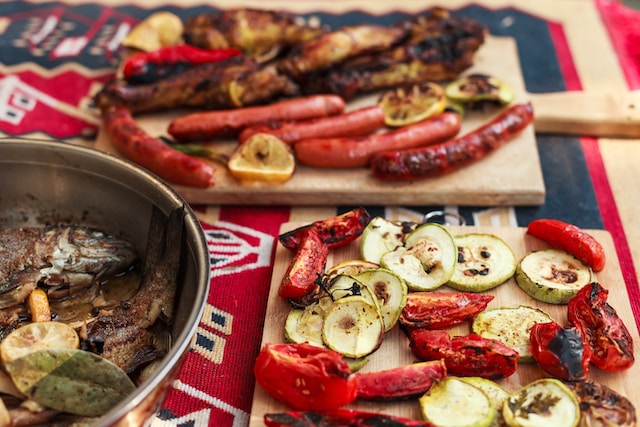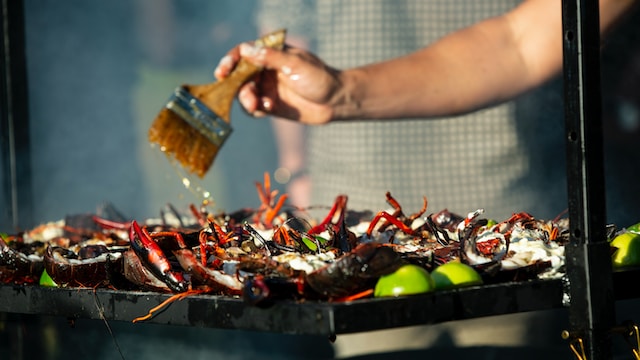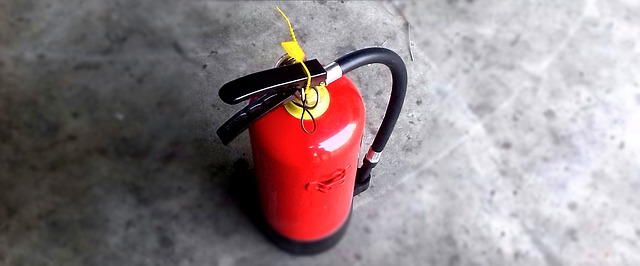Outdoor Cooking Station: How-to Guide and Set-Up
Cooking outdoors is an entirely different experience than indoors. With advancements in equipment, the rise in outdoor entertainment trends, setting up an outdoor cooking station has never been more enticing.
Why an Outdoor Cooking Station?
Reasons to Invest in One
1. Elevate Your Entertaining Game: Hosting a barbecue or a garden party? An outdoor cooking station becomes the star attraction. Guests don’t just want food, they also crave an experience. Plus, it offers a great conversation starter!
2. Increase Property Value: A well-set-up outdoor kitchen can significantly up the ante of your home’s appeal. If ever you decide to sell, potential buyers often see an outdoor cooking space as a luxury, making your home more desirable.
3. More Cooking Space: Ever felt the kitchen was too cramped when preparing for a feast? Moving the operation outdoors offers more elbow room, especially if you’re whipping up multiple dishes.
4. Culinary Exploration: Outdoor cooking isn’t restricted to barbecues. With the right equipment, you can try out a variety of dishes – from wood-fired pizzas to smoked desserts. It pushes your boundaries as a cook, letting you experiment and innovate.
5. Sustainability: Cooking outdoors, especially in the warmer months, means your indoor kitchen and home stay cooler. This could result in lower energy bills as you’d be less reliant on air conditioning.
Benefits Over Indoor Cooking
1. Enhanced Flavor Profile: The smoky flavor achieved from grilling or smoking outdoors is hard to replicate in an indoor kitchen. Dishes have that authentic taste which many food enthusiasts swear by.
2. Avoid Odor Retention: Some foods, especially when fried or heavily spiced, leave lingering smells in the home. Cooking these dishes outdoors means your indoor space remains fresh.
3. Better Ventilation: The open environment ensures all the smoke and aromas don’t stay trapped.
4. Social Engagement: Cooking in your backyard or patio makes it easier to interact with guests or family. There’s no wall separating you, so you’re part of the fun and not isolated in the kitchen.
5. Flexible Cooking Methods: With no smoke alarms to worry about, you can play with open flames, try out slow smoking, or even wood-fired cooking. The outdoors becomes your culinary playground.

Setting Up Your Cooking Space
Choosing the Right Location
Accessibility: You’d want your outdoor kitchen close enough to the main house. This makes it easier to transport ingredients, dishes, and other essentials. A location near the back door can be particularly beneficial.
Sun and Shade: While you might enjoy the sun, remember your equipment might not. The sun can prematurely age your appliances and make the cooking process uncomfortable. A spot with both sun and shade would be perfect. You can also consider places where it’s possible to set up an umbrella or other shade solutions.
Wind Direction: Take note of which direction the wind generally blows. You wouldn’t want the smoke from your grill to always blow towards your guests or into your home. It’s best if it can be directed away from main gathering areas.
Level Ground: This is crucial. A flat, stable surface ensures safety and functionality. Avoid places with steep inclines.
Safety: Ensure it’s a safe distance away from flammable materials like fences, trees, or shrubs. Also, keep it away from play areas of children or pets.
Essential Cooking Equipment
Grills and Smokers
There are various types of grills to consider based on your cooking preferences:
Charcoal Grills: Provide a distinct smoky flavor and are perfect for searing meat at high temperatures.
Gas Grills: Convenient and easy to control. They heat up quickly and are perfect for those who grill often.
Electric Grills: Ideal for places with fire restrictions. While you might compromise a bit on flavor, they’re super easy to use.
Smokers
For those who adore that deep, smoky flavor in their food. Smokers come in various types like wood, pellet, electric, and charcoal. Depending on the depth of flavor and convenience, you can choose one that suits your style.
Preparation Stations
Countertops: Having ample counter space allows you to prep ingredients, keep cooked food, or even have a serving station. Materials like granite or treated wood work well outdoors.
Sinks: A small sink can be incredibly handy for washing veggies or hands. Ensure you have a water source nearby.
Storage: Consider cabinets or drawers to store cooking utensils, plates, and other essentials. This way, you won’t always have to run back into the house.
Appliances: Think about additional appliances like a mini-fridge, pizza oven, or even a beverage station.
Check Amazon: COTLIN 24 Inch Built-in Outdoor Refrigerator, 5.4 Cu.Ft
Weather Protection Solutions
Pergolas: These not only add an aesthetic appeal but also provide shade. You can even have vines growing over them for a natural touch.
Umbrellas: A large patio umbrella can provide shade on particularly sunny days. It’s also easy to set up and move around.
Gazebo: If you’re looking to get fancy, a gazebo can house your entire cooking station and offer protection from rain.
Check Amazon: Cool Spot 11×11 Pop-Up Instant Gazebo Tent
Weatherproof Covers: Ensure all your appliances have custom-fit covers. This will protect them from rain, sun, and other elements, prolonging their life.
Mouth-Watering Dishes to Try
Barbecue Classics

1. Slow-Cooked Ribs: Marinated with a mixture of brown sugar, paprika, garlic powder, and a hint of cayenne, these ribs are cooked to perfection over low and slow heat. Glaze them with your favorite BBQ sauce in the last 30 minutes of grilling for that sticky, sweet finish.
2. Grilled Chicken Wings: A crowd favorite! Season them with salt, pepper, garlic, and a splash of lime. Once grilled, toss them in a spicy buffalo sauce or a tangy BBQ concoction.
3. Pulled Pork Sandwiches: A tender pork shoulder, rubbed with spices and slow-cooked until it’s pull-apart tender. Slap the juicy meat between buns, top with coleslaw, and drizzle with BBQ sauce for a sandwich that’s out of this world.
4. Beef Brisket: This requires patience. Smoking a beef brisket for hours allows it to develop a deep smoky flavor and a crust, or ‘bark’, on the exterior. Slice it thin and serve with pickles, onions, and white bread.
Seafood Delights

1. Grilled Lobster Tails: Brush the tails with garlic herb butter and grill them until they’re a beautiful charred color. The meat becomes tender, smoky, and utterly delicious.
2. Cedar Plank Salmon: Infuse your salmon with a unique woody flavor. Simply soak a cedar plank in water and then lay your seasoned salmon on it. As the wood heats up on the grill, it imparts a smoky flavor to the fish.
3. Shrimp Skewers: Marinate shrimp in a mixture of olive oil, lemon zest, garlic, and a sprinkle of chili flakes. Thread them onto skewers, grill, and then serve with a side of lemon-garlic aioli.
4. Grilled Clams with Herb Butter: Place fresh clams directly on the grill. As they heat up, they’ll pop open revealing the juicy meat inside. Drizzle with a concoction of melted butter, garlic, parsley, and a squeeze of lemon.
Safety and Maintenance
Keep It Clean
1. Regular Cleaning: Just like an indoor kitchen, the more you use your outdoor cooking station, the more regular cleaning it requires. Make sure to wipe down countertops, clean the grills after each use, and regularly empty and clean any grease traps.
2. Deep Cleaning: Depending on usage, aim to deep clean your outdoor kitchen at least once a month. This involves taking out all equipment and giving everything a thorough scrub, checking for any signs of wear or damage.
3. Stainless Steel Care: If you have stainless steel appliances, they can be susceptible to fingerprints, stains, and rust. Use a stainless steel cleaner to ensure they remain shiny, rust-free, and in good condition.
4. Seal and Protect: Natural stone countertops and certain types of wood can be prone to staining and weathering. Make sure you re-seal these surfaces periodically to protect against the elements and spills.
5. Check for Pests: An outdoor cooking station can attract pests. Periodically check for any signs of nests or infestations, especially if you have cabinets or storage spaces.
Fire Safety Measures

1. Position Away from Flammable Materials: Ensure that your cooking station is away from fences, trees, shrubs, or any other flammable structures. Maintain a safe clearance to avoid accidental fires.
2. Keep a Fire Extinguisher Handy: Always have a fire extinguisher within reach. Make sure it’s rated for all types of fires, especially grease fires which are common in cooking areas.
3. Regularly Check Gas Lines: If you’re using a gas grill, routinely check for leaks in the lines. You can do this by applying a soap water solution to the line; bubbles will form if there’s a leak.
4. Never Leave Cooking Unattended: It might seem like common sense, but it’s easy to get distracted. Unattended cooking is a primary cause of accidental fires.
5. Use Heat-Resistant Materials: For countertops and other structures close to the grill or oven, use materials that can withstand high temperatures.
6. Properly Store Lighter Fluids: If you’re using charcoal grills and require lighter fluids, make sure they’re stored away from children’s reach and far from open flames.
7. Ensure Good Ventilation: Smoke and heat need to escape, especially if you have a semi-enclosed cooking station. Proper ventilation ensures that smoke clears out, reducing the risk of inhalation and accumulation of harmful gasses.
Conclusion
Creating an outdoor cooking station is an exciting journey. Whether you’re a seasoned chef or just someone who loves a good grilled sandwich, cooking outdoors is always a great experience. Now that we have explored how to set-up your own, how to maintain it, and what safety measure to consider, you can now start making a blueprint of your own!
FAQs
1. What type of fuel is best for an outdoor cooking station?
The ideal fuel varies with preference. Charcoal imparts a smoky flavor, propane ensures consistent temperatures, natural gas is ultra-convenient, and wood offers a traditional taste. Assess availability and cost in your locality.
2. How do I protect my outdoor cooking station from the elements?
Opt for weather-resistant materials during setup. Employ awnings or canopies for rain and sun protection, utilize fitting covers for equipment, and choose a location guarded against harsh weather conditions.
3. Is it safe to have a refrigerator in my outdoor cooking station?
Absolutely, but it should be an outdoor-rated refrigerator. These are tailored for outdoor conditions, ensuring functionality and durability, whereas standard indoor models might falter.
4. How much space do I need for an effective outdoor cooking station?
Space needed depends on your aspirations for your outdoor cooking station. Account for cooking equipment, preparation areas, storage, and possibly seating. Even limited spaces, like balconies, can be optimized with thoughtful planning.
5. Can I use my outdoor cooking station year-round?
Definitely! For colder months, think about patio heaters or outdoor fireplaces, insulated covers for equipment, and indoor storage for sensitive items. Ensure safe pathways, free from snow or ice, and always prioritize safety.




